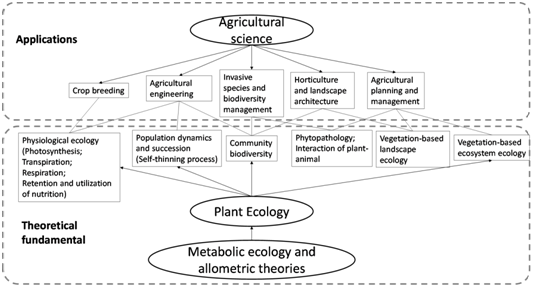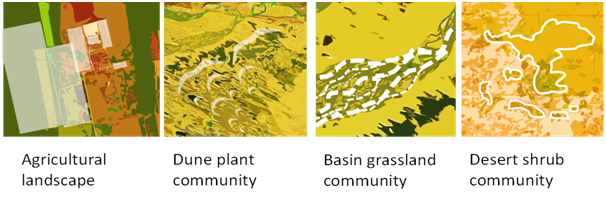Advances in
eISSN: 2373-6402


Opinion Volume 4 Issue 1
School of Environmental, Tsinghua University, China
Correspondence: Zhouyuan Li, School of Environmental, Tsinghua University, China
Received: June 27, 2016 | Published: July 1, 2016
Citation: Wenzhao W, Zhouyuan L, Zhang Y. Prospective application of metabolic ecology in plant ecology and agricultural science. Adv Plants Agric Res. 2016;4(1):212-213. DOI: 10.15406/apar.2016.04.00122
The metabolic ecology and allometric theory become flourishing and widely developed in the field of ecology and theoretical physics by recent decades.1,2 The quantifiable laws from metabolic ecology, which are based on statistical regression out of observational facts and derived through basic physics, were considered as a major breakthrough of the contemporary theoretical ecology. Metabolic ecology with its self-consistency in theory and broad application perspective in practice has been though highly in the science community.2 Following the fundamental theory of metabolic ecology having been established, the relevant studies constantly continued, involving many branches of biology, ecology, and even expanding to economy.2,3 Research paradigm of metabolic ecology needs improvement through multidisciplinary interaction, especially in plant ecology and agricultural science, which provide the platform for the relevant theoretical and practical development (Figure 1). On the spatial dimension, it would be a valuable attempt to clarify the relations between the community co-evolution and the plant diversity pattern formation in the framework of the spatial game theory and flow network analysis, which have the same basic principals in the models of metabolic ecology.3–5 Metabolic ecology theories, revealed the biological phenomena and the laws based on biological fractal structure and fluid mechanics.6 While the terrestrial ecosystem landscape also own the fractal structure like mountainous and basin areas, where have been of common recognition and quantitative measurement7–8 (Figure 2). A combination of metabolic ecology and macroscopic approaches like applying remote sensing technique and landscape ecology will bring more enhancements in the large-scale investigation of the vegetation observation and analysis.9–10 For the temporal dimension, there were many of investigations on the fractal structure of periodic fluctuation phenomena such as biological rhythm of the plants and the animal-plant interactions, such as the topics about climate change, migration of birds, hibernation and vertical migration of mammals based on the forage theories,11–13 are closely related to substance metabolism and energy flows of the elements in ecosystems, however, that so far very limited work of systematic generalization, or quantitative research from the perspective of metabolic ecology has been carried out.

Figure 1 A general framework for the prospective application of metabolic ecology in plant ecology and agricultural science.

Figure 2 Different random fractal structures in natural vegetation landscape based on the remote sensing observation (interpretation from the imagery of Google Earth).
In the future, the promotion and deepening for the application of metabolic ecology to the plant and agricultural sciences require scientists and engineers, make efforts together in a strategically way. It was suggested to learn successful experience from former theories like landscape ecology, system dynamics method, and ecological network theory,13–16 to standardize and axiomatize the theoretical framework, to apply the research paradigm in practices, and to systematically construct the quantification indicators. In addition, user-oriented software making and integration, educational and commercial cases development, organizing societies to provide services for the industry and society should also be helpful to establish wider recognition and improve the value of the theories. It was expected that the methodology of metabolic ecology would enhance the new round of theoretical updates in plant ecology as providing deeper understanding on the mechanism of the structure-function of ecosystems by the different scales to effectively modernize the agricultural planning and management and improve the sustainability of the whole industry.
None.
The author declares no conflict of interest.

©2016 Wenzhao, et al. This is an open access article distributed under the terms of the, which permits unrestricted use, distribution, and build upon your work non-commercially.